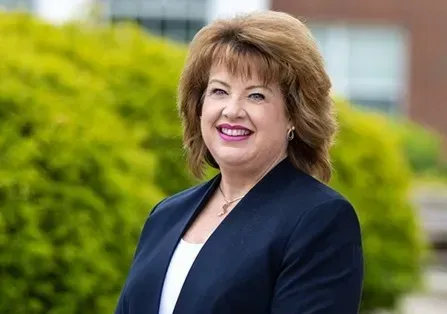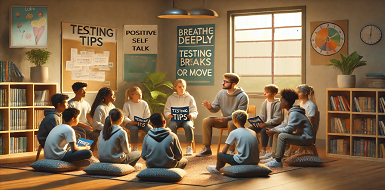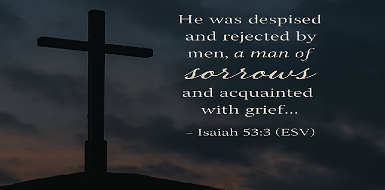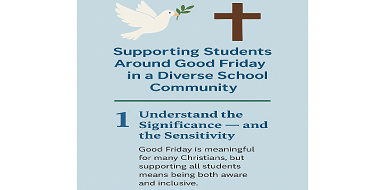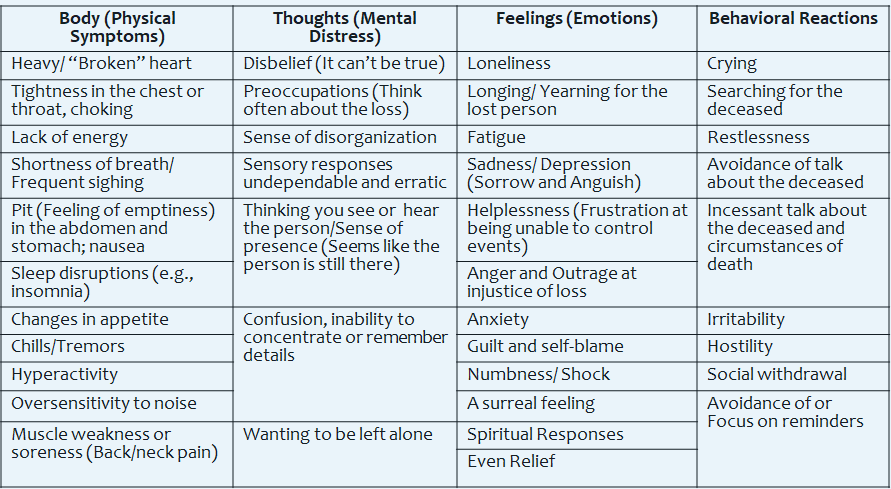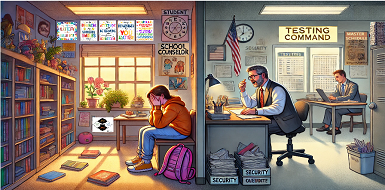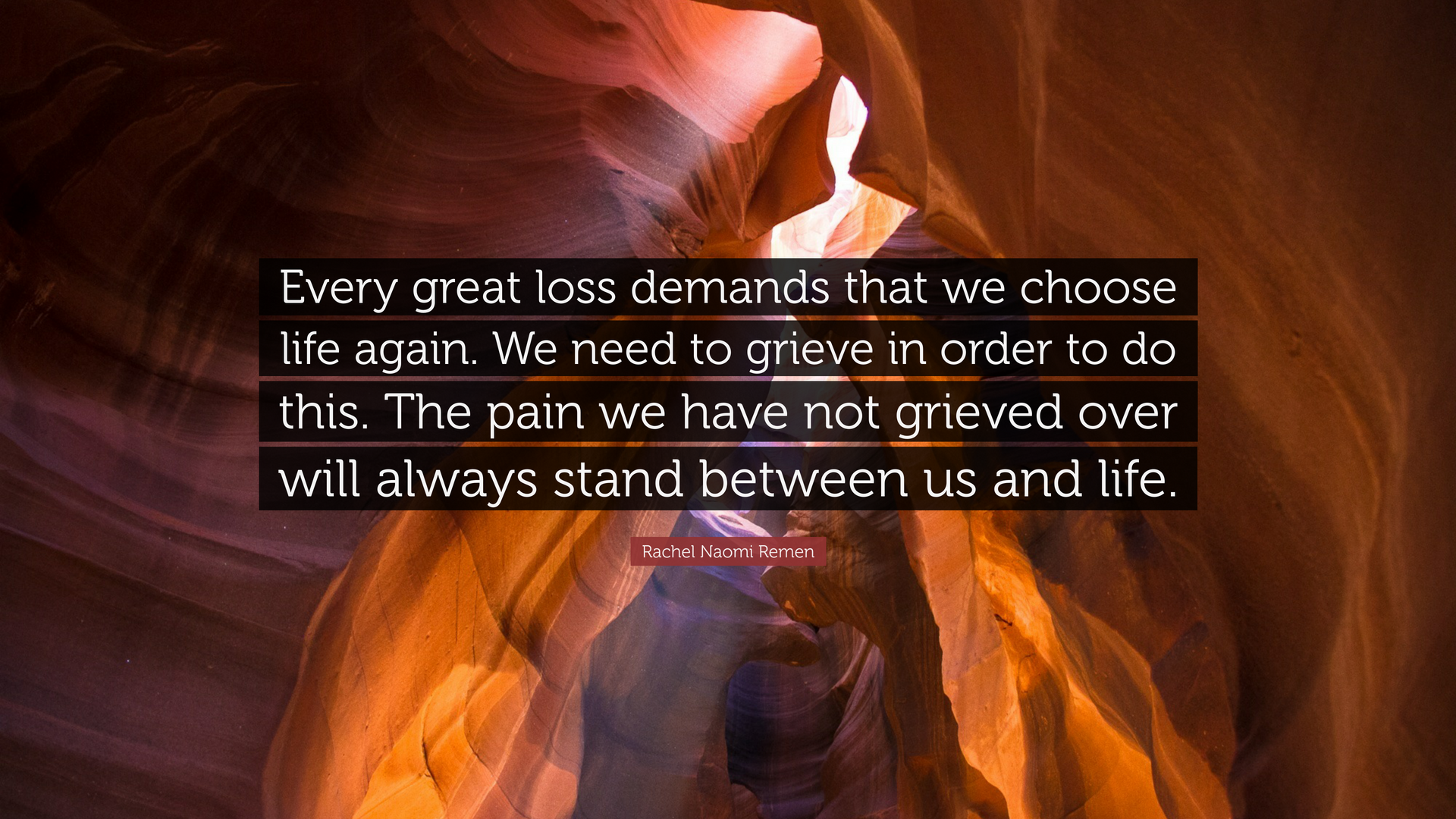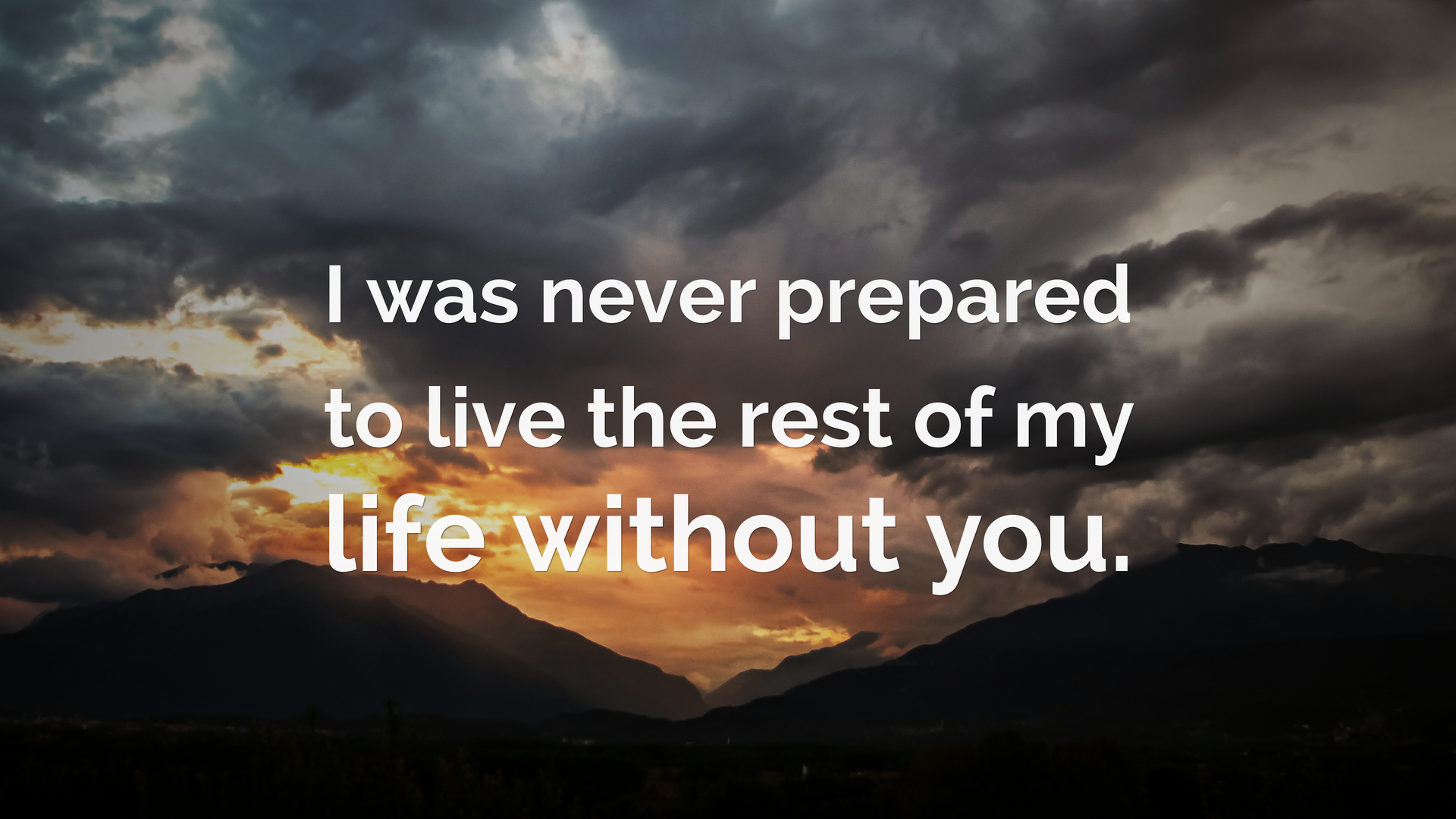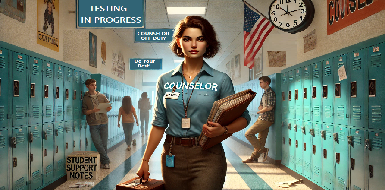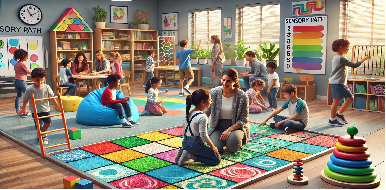More Halloween Activities
Learning Fun!
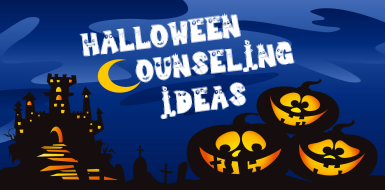
As Halloween approaches, we're continuing to bring creative ideas that can help your students learn, grow, and have fun in the process.
Games/Play Therapy
These games focus on promoting teamwork, problem-solving, communication, and emotional intelligence—all while enjoying the Halloween spirit!
1. "Spider Web of Compliments" Game
Objective: Build community and self-esteem through positive reinforcement.
What You’ll Need:
- A ball of yarn or string
How It Works:
- In a group setting, have students sit in a circle.
- The first student holds onto the end of the yarn and tosses the ball to another student, giving them a compliment as they do so.
- This process continues until a “spider web” forms between the group members.
Not only does this activity promote positive communication, but it also visually represents how interconnected we are and how kind words can build a strong, supportive community.
2. "Trick or Treat for Kindness" Challenge
Objective: Encourage acts of kindness and empathy.
What You’ll Need:
- Small treat bags or containers
- Slips of paper with kind acts written on them (e.g., “Hold the door for someone,” “Compliment a classmate,” “Help a friend with their work”)
How It Works:
- Hand out treat bags to students, and have them draw one kindness slip to complete during the school day.
- At the end of the day, students can reflect on their kind acts and share how it felt to brighten someone’s day.
- You can turn this into a week-long challenge, tracking how many acts of kindness students can accomplish leading up to Halloween.
This activity subtly shifts the focus from receiving (trick-or-treating) to giving.
3. "Mummy Wrap Relay"
Objective: Foster teamwork and communication as students work together to “mummify” their teammates.
What You’ll Need:
- Toilet paper or white streamers
Instructions:
- Divide the class into small teams.
- Each team selects one person to be the “mummy,” while the rest of the team works together to wrap them up using toilet paper or streamers.
- Set a timer for 2-3 minutes, and see which team can wrap their mummy the fastest and most creatively.
- After the relay, discuss how working together made the activity easier and more fun.
This game emphasizes collaboration, communication, and teamwork.
4. "Ghostly Gratitude Hunt"
Objectives: (1) Practice gratitude by searching for hidden “gratitude ghosts.”
(2) Continue to build relationships between you as the counselor and the students.
What You’ll Need:
- Small paper ghost cutouts
- A space to hide the ghosts (hallways, classrooms, cafeteria, playground etc.)
- Markers for students to write on the ghosts (Teachers can help you provide these in classrooms)
Instructions:
- Hide small paper ghosts throughout the school.
- Then, either through a letter you share with teachers or through your large group/classroom lessons, explain that you've hidden these ghosts throughout the school to the students. Their job is to find the ghosts as they are walking through the halls, eating lunch, in special area/related arts, etc.
- When they find a ghost, they are to write or draw something they are grateful for on it and give it to their teacher. (Ask the teacher to then put it in your mailbox.)
- As you gather all the ghosts, create a “Wall of Gratitude” to display outside your office.
- In the next large group/classroom session, discuss why it’s important to practice gratitude, especially during the excitement of holidays like Halloween.
This activity promotes mindfulness and appreciation, helping students reflect on what they’re grateful for.
Art Therapy
1. "Emotional Pumpkins" Activity
Objective: Teach students to identify and express their emotions.
What You’ll Need:
- Pumpkin printouts or mini-pumpkins (real or artificial)
- Markers or paint
- A list of emotions (or emotional vocabulary cards)
How It Works:
- Have students draw or paint faces on pumpkins to represent different emotions—happy, sad, angry, surprised, scared, etc. This visual representation helps younger students make connections between feelings and facial expressions.
- Once finished, invite them to share a time they felt each emotion and how they managed it.
- You can also extend this activity by discussing coping strategies for when students feel overwhelmed by strong emotions.
2. "Monster Emotions Masks"
Objective: Help students identify and express different emotions.
What You’ll Need:
- Paper plates or cardstock
- Paint, markers, and crayons
- Craft sticks (for handles)
- Scissors and glue
- Decorations like googly eyes, feathers, yarn, etc.
How It Works:
- Students create masks by decorating paper plates or cardstock to look like monsters that represent different emotions—happy, sad, angry, scared, etc.
- They can use paint, markers, or crayons to add colors and details to their masks.
- Attach a craft stick to the bottom of each mask so students can hold them in front of their faces.
- In a group, have students hold up the mask that represents their current emotion and explain why they feel that way.
This activity helps students identify and express their emotions, making them more aware of how they feel in different situations.
3. "Witch's Broom of Wishes"
Objective: Encourage students to reflect on their hopes and dreams.
What You’ll Need:
- Brown construction paper for the broom handle
- Yellow or orange paper for the broom bristles
- String or ribbon
- Markers and crayons
How it Works:
- Cut out long, thin rectangles from brown construction paper to represent the broom handles.
- Cut strips of yellow or orange paper to create the broom bristles.
- On the bristles, have students write their wishes for the future—these can be personal, academic, or community-based wishes.
- After decorating the broom, tie the bristles together with string or ribbon, and display the brooms in the classroom.
Reflecting on hopes and dreams can inspire students to take steps toward achieving them, fostering a growth mindset.
4. "Bat-tastic Coping Strategies"
Objective: Help students identify coping strategies to manage stress and emotions.
What You’ll Need:
- Black construction paper or cardstock
- Scissors
- Markers, crayons, or paint
- Googly eyes (optional)
Instructions:
- Have students cut out bat shapes from black paper or cardstock.
- On the wings of each bat, ask students to write coping strategies they can use when they’re feeling upset, stressed, or overwhelmed (e.g., “take deep breaths,” “talk to a friend,” “draw or write,” “listen to music”).
- After decorating the bats with googly eyes or other craft materials, hang them up in the classroom as a reminder for students to use their coping strategies when needed.
Teaching students to develop and use healthy coping strategies is crucial for managing stress and emotions effectively.
Story Activities (A type of Bibliotherapy)
- "Haunted House of Worries" Discussion
Objective: Encourage students to confront and manage their worries and fears.
What You’ll Need:
- A simple haunted house template or a hand-drawn house on a whiteboard
- Sticky notes or cut-out ghosts
How It Works:
- Ask students to write down or draw one of their worries or fears on a sticky note or ghost cut-out.
- Have them place their "worry ghosts" inside the haunted house.
- Afterward, discuss ways they can "scare away" or cope with these worries, symbolizing how they can overcome fears in their daily lives.
- Have them write a story - using themselves as a character - sharing some of the ways that you discussed as well as more creative ideas that the "author" adds to "scare away" these worries.
This activity helps students see that while everyone has fears, they can face and conquer them with support and strategies.
2. "Costume Role-Playing" for Conflict Resolution
Role-playing can be a powerful tool for teaching conflict resolution and allows for students to see a specific part of the story - the character - as you develop their Bibliotherapy skills.
Objective: Practice perspective-taking and conflict resolution skills.
What You’ll Need:
- Simple costumes or masks
How It Works:
- Choose some common conflict scenarios (e.g., disagreements on the playground, sibling rivalry, or sharing issues).
- Have students role-play the scenarios while “in costume,” either wearing masks or simple Halloween props.
This playful approach allows students to explore how it feels to be in someone else’s shoes and practice resolving conflicts using positive communication and problem-solving strategies.
Final Thoughts
As you prepare for this spooky season, consider how these activities can create a positive and engaging experience for your students, while supporting their emotional and personal growth.
Wishing you a hauntingly happy and productive Halloween season with your students!
I am a school counselor turned counselor educator, professor, and author helping educators and parents to build social, emotional, and academic growth in ALL kids! The school counseling blog delivers both advocacy as well as strategies to help you deliver your best school counseling program.

I'm a mother, grandmother, professor, author, and wife (I'll always be his). Until October 20, 2020, I lived with my husband, Robert (Bob) Rose, in Louisville, Ky. On that awful day of October 20,2020, my life profoundly changed, when this amazing man went on to Heaven. After Bob moved to Heaven, I embraced my love of writing as an outlet for grief. Hence, the Grief Blog is my attempt to share what I learned as a Counselor in education with what I am learning through this experience of walking this earth without him. My mission is to help those in grief move forward to see joy beyond this most painful time.
